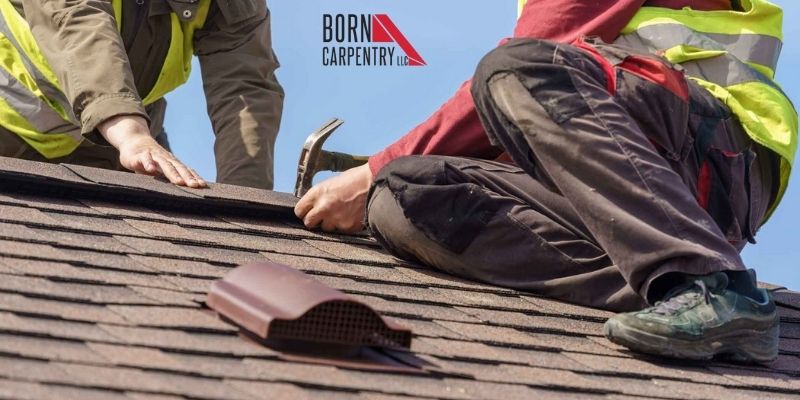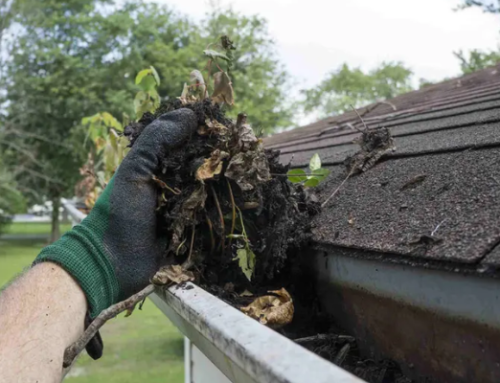The effect of a storm can be disastrous. It can dislodge gutters and tear off roof shingles. The exterior of your home can also be destroyed, leaving punctures and dents and shattered windows. All these problems can be caused by wind-blown debris. It can be frustrating to deal with the effects of a storm. This rather unfortunate occurrence requires instant storm damage restoration.
Types Of Storm Damage
Storm damage can typically be classified as wind damage, snow and hail damage, and/or water damage.
The signs of wind damage may include loose debris, visible water infiltration, visible loss of shingle granules, and missing shingles. For snow and hail damage, the signs may include ice dams, broken or clogged downspouts and gutters, and/or missing or damaged shingles. Visible moisture or attic issues and accent/roof support damage are some of the signs of water damage.
What To Expect After Storm Damage Restoration
It is important to know the next step to take after storm damage. This action is important as it can impact your furniture, floors, insurance claim, and vehicles. The right action can minimize the risks to your wallet, belongings, and family. Although the recovery process can be challenging, knowing what to expect in the aftermath will help you move forward. So, after a storm occurs, and you suspect damage has been done, here’s what to consider…
1. Inspect your home for storm damage

In the aftermath of a storm, check your home to see what is damaged. Not all issues will be visible to the naked eye. Also, some areas could be slippery, there could be loose, exposed ceiling tiles or floorboards, and/or electric lines could be broken, so be cautious when checking for damages.
Before you do any thorough check, listen to local news to be sure that your area is safe. Take note of exposed nails and broken glass. Stay away from downed electric power lines as they can be dangerous, particularly when stagnant water is nearby. If possible, avoid doing a thorough inspection after dark. These tips will help keep you safe during an inspection.
2. Review and document the extent of storm damage
Storm damage inspection and review are things you must do before contacting your insurance company. This is necessary because your review will probably be used when you file a claim. Taking pictures and videos of the damage(s) is a good idea. Take notes of your flashing and gutters, dents on vents, and holes on roofs. With photo evidence, your insurance adjuster can affirm your claim.
Take all necessary safety precautions when documenting the extent of storm damage. Contact a trusted contractor for the repair work if you do not have insurance.
3. Perform prompt repair wherever possible
Your home is less vulnerable to additional home damage when repair work is promptly done. For instance, if wind and water are getting into your home through open spaces like a broken window, board up the window as soon as you can. This will help you avoid any additional property damage. However, contact a professional for repairs that you cannot fix on your own.
4. Get in touch with your insurance company
If your home is insured, you should contact your insurance company. However, you should ensure that a thorough assessment of damage is done before you file a claim. The picture and video documentation you have should come in handy at this point. You should get compensation from your insurer if you have evidence of the damage(s) caused by a storm.
Your home insurance provider will hopefully guide you on how to go about making your claim. Some insurance companies will give you a list of emergency service providers in your locality as well as a claim number.
In most cases where home restoration is required, your insurance provider will coordinate the work that needs to be done. The process of storm damage restoration is smoother when you promptly contact your insurance provider and have documents to back up your claim.
5. Choose the right contractor

Choosing the right contractor for storm damage restoration is important. The professional you hire should be trustworthy and reliable. The contractor should perform their assessment before beginning any repair work.
You can take the pressure and stress of repair work off your shoulders by having a restoration company do the work for you. Your insurance provider can even communicate with the contractor you choose so that the restoration process can start as soon as possible.
Conclusion
Severe weather can cause havoc to your home. You may need the service of a storm damage restorer and your insurance company regardless of the extent of the damage. Working together, both of them can get your home back to a decent condition. In Andover, MN, storm damage repair work can be done by Born Carpentry; Call 612-747-8003 for details.






